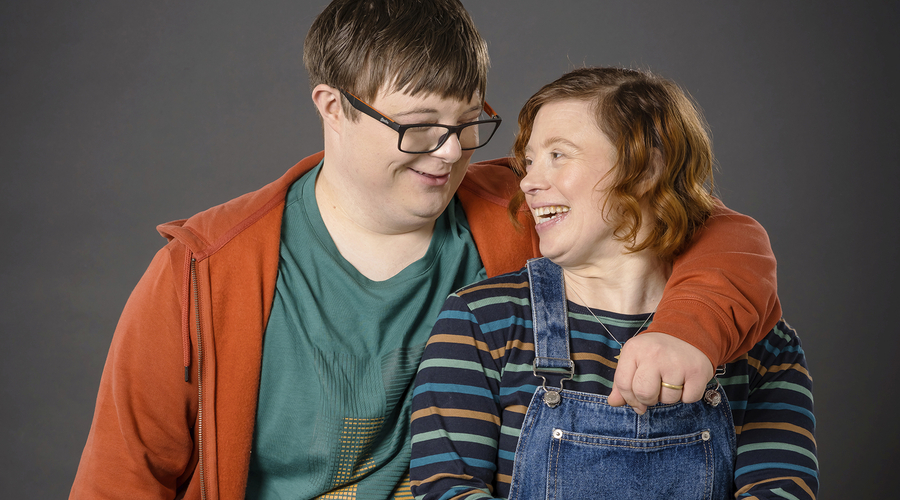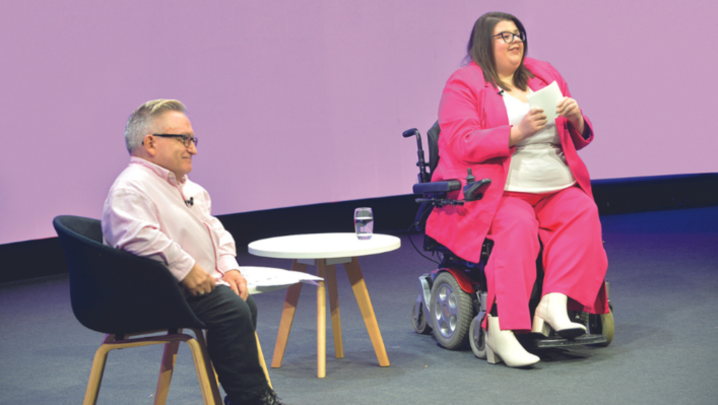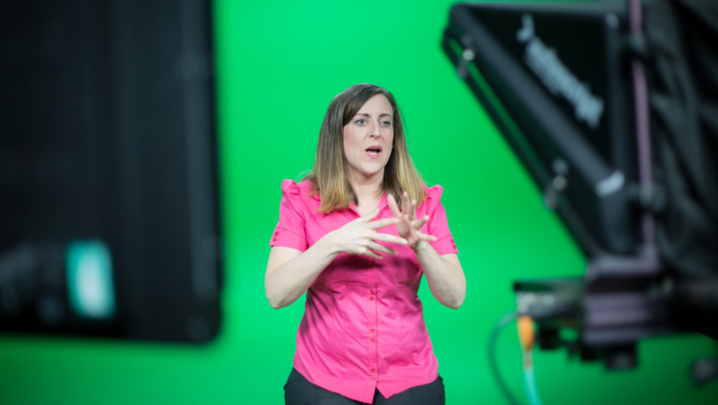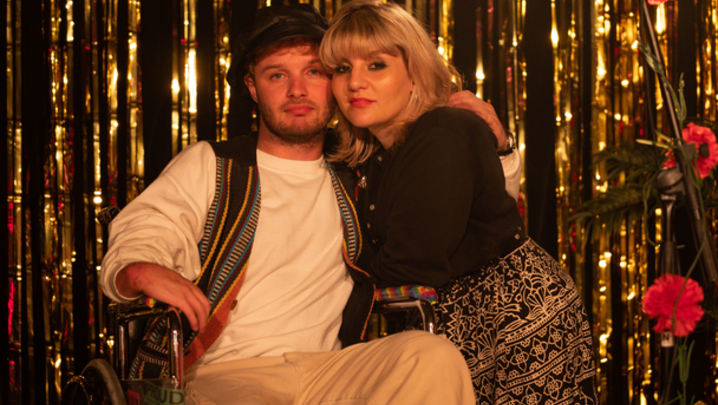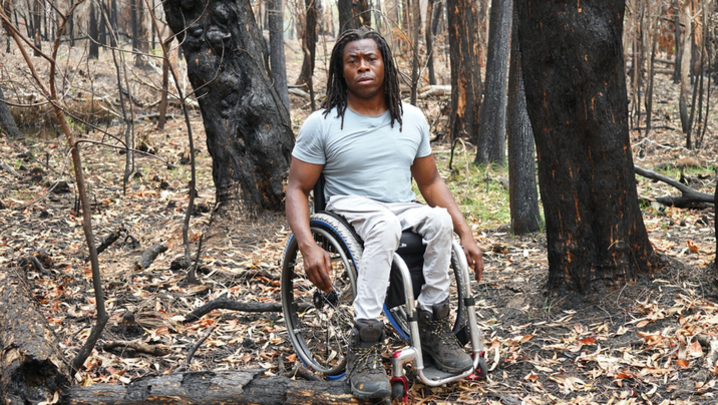A few basic changes can transform the lives of disabled people working in TV – and they won’t break the bank. Carole Solazzo investigates.
Everyone’s heard of the Bechdel test*, right? Possibly the “DuVernay test”, too, as a measurement of the representation of people of colour in TV shows and films. Maybe even the “Vito Russo test” for gay and lesbian representation.
But what about the “Edgar test”, for disabled talent?
Justin Edgar of production company and disability training provider 104 Films, who is himself disabled, invented the rules when challenged by BBC Radio 4’s The Film Programme.
Now, with Peter Bowker’s BBC One drama Ralph & Katie – a spin-off from the hugely successful The A Word – given a primetime slot, disabled representation and the working environment of disabled creatives on- and off-camera is in the spotlight.
Twenty-two per cent of the UK population is disabled, and, according to Edgar, 70% of them are “hard of hearing, have mental health issues, are neurodiverse [or] learning disabled. Plus 1.5 million people have some experience of deaf-blindness…. These are huge groups of people.”
So why aren’t disabled people more visible? And why isn’t more provision made for them in terms of access?
Cherylee Houston of Triple C, an organisation that helps disabled people to access the arts and media, suggests one reason: “I’d say, for anyone who’s not worked with a d/Deaf**, disabled or neurodivergent person before… there’s a fear of getting it wrong.”
Edgar agrees: “People don’t want to come across as politically incorrect… and, as a result, you get a lack of engagement with disability, and a misunderstanding of it.”
“We need to take away the stigma and mystery behind it all,” says Jordan Hogg, who directed Ralph & Katie. “If people ask [about my disability], then you can inform them, and everyone can work better as a unit.”
However, Houston thinks some people will find this intrusive. Instead, she suggests, “Ask: ‘What are your access needs?’”
"All the main broadcasters and some SVoDs have developed the ‘5 As’ – Anticipate, Ask, Assess, Adjust, Advocate – for how they expect inclusion to be built into productions.”
Producer Jules Hussey agrees but goes further: “There’s a fear of [a production] costing more, not being able to get the money from funders, and having to bear the burden of the costs.” But, she argues, this “is a myth”.
Disabled writer Tom Wentworth says the fear is: “We’re going to be very expensive because we’re going to need all these ‘special things’… and we’re going to have demands and be difficult.”
In fact, nothing could be further from the truth. On Ralph & Katie, says Hussey, who produced it, the vast majority of those adjustments, such as “accessible toilets, easy-to-read call sheets, signage and name badges”, came with a tiny price tag.
“We made all the sets wheelchair-accessible,” Hussey adds. “It didn’t cost us any more money. We just said, when they were building the set: ‘Make sure it’s wheelchair accessible’. Which you should do anyway, because then the camera and everything can get in more easily.”
In other words, access adjustments benefit everyone. Creative coach Jess Mabel Jones, of Access All Areas, agrees. Indeed, she believes there are already many “learning disabled and neurodivergent people working in the television industry, it’s just that… they have felt too scared to ask [for what they need] because they’ve been afraid of being told off, or not employed again”.
Hussey and autistic director Rebekah Fortune, of Seahorse Films, both strongly believe in having “access champions” on set – which, again, adds nothing to the budget.
“TV is a hugely risk-averse industry,” says Hussey. “That applies to employment as well as ideas – we all work with the same people…. But, on Ralph & Katie, I asked every head of department [to employ] at least one disabled or neurodiverse person on their team.”
The access champions were then “just another member of the crew but with lived experience. If [a crew member], for example, was diabetic and wanted someone to keep an eye on them, there’d be someone in the crew to do that. None of that cost money.”
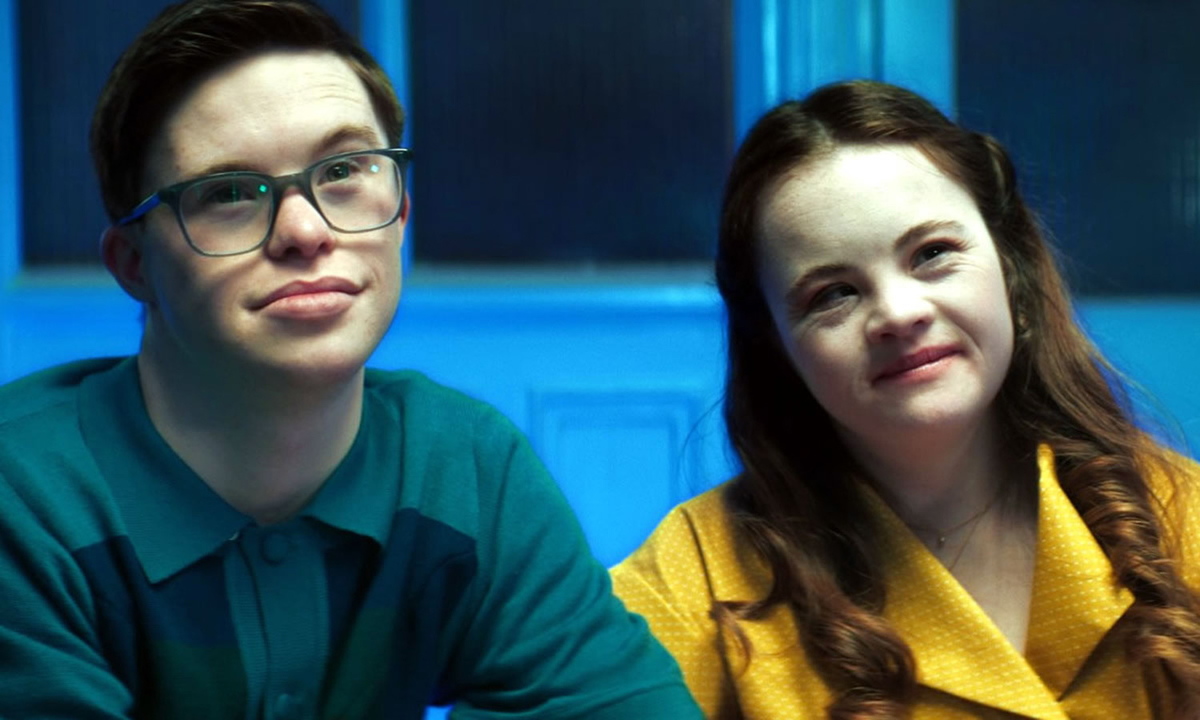
On Bebe AI, Fortune’s two lead actors, both of whom have Down’s syndrome, had “a runner specifically for them. The day before [shooting], they palled up, so the actors felt confident with this runner, and the runner’s job was to look after what they needed – a drink or toilet break, [to make sure] that they knew where the toilets were…. This runner was ‘their person’.”
Fortune believes in starting early: “A lot of people who are emerging make smaller budgets work, so, by the time they [move] into bigger TV work, [disabled] actors are used to [working in this way]. It’s helpful – it means it’s not overwhelming.… The same with crew. If, since leaving film school or uni, crew members have been working with disabled actors, by the time they get on a big TV show, they know how to be.”
Houston shares this view, and Triple C and its Disabled Artists Networking Community are playing a big part in “skilling up the community at the same time as having those key conversations”. Of course, some roles will add to the budget.
But, says Houston: “If you’ve thought about it from the start, and [access provision] is built in, it doesn’t cost that much.” She points out: “All the main broadcasters and some SVoDs have developed the ‘5 As’ – Anticipate, Ask, Assess, Adjust, Advocate – for how they expect inclusion to be built into productions.”
This comes after the latest data from Project Diamond, which aims to monitor and report on diversity in broadcasting, showed that only 8.3% of on-screen contributions to TV programmes shown in 2020-21 were made by disabled people, and just 6% of crews on TV are disabled.
“It’s about talking to your commissioners, who will be able to advise,” Houston adds. And asking the individual disabled creatives themselves. “There’s no ‘one-size-fits-all’,” Fortune insists.
Hogg notes: “On Ralph & Katie, we asked everyone who came in the door, ‘What do you need to make your job better?’”
Enter organisations such as Triple C, 104 Films and learning-disability theatre group and consultants Access All Areas, which helps disabled talent to compile “Access Riders”, and provides productions with specialist training and on-set acting coaching.
Autistic actor Leo Long is an enthusiastic recipient of their support as co-lead on the recent Netflix feature success I Used to Be Famous. “I am very much a visual learner,” he says. “Tricia [Hitchcock of Access All Areas] created visual material, including scene breakdowns and a storyboard for rehearsals and shooting, to help me understand [director Eddie Sternberg’s] ideas.”
Access All Areas’ toolkit of person-centred coaching techniques is based on years of experience working with disabled creatives, consulting on shows such as Holby City and Hollyoaks, and is backed up by thorough academic research.
“Once production co-ordinators have had some training”, creating documents such as Easy Read call sheets “is quite straightforward”, says artistic director Nick Llewellyn.
In terms of casting, he says: “Put some money aside to pay a creative coach for autistic and learning-disabled actors; £60 to £100 is not a huge cost. If they get the job, some [actors may] have government Access to Work funding… we can help put in applications. And when it comes to a creative coach, yes, it costs money. But we pay for intimacy co-ordinators now. It’s just one extra person… it’s not going to break the bank.”
“We rehearsed, rehearsed, rehearsed,” says Long, quoting from the film. “Tricia made sure I had a quiet space where I could… keep calm if I felt very anxious or over-tired. [She] provided me with feedback and… made it great fun, too…. I’m very proud of my performance.”
And the Edgar test rules?
Edgar advises: “1) Disabled characters should be played only by disabled actors; 2) The show should be either written by a disabled writer or directed by a disabled director; 3) The disabled character should not have to overcome adversity; 4) The disabled character [should not be] ‘able-bodied’ at the start or at the end of the show.”
How will your next production measure up?
* The Bechdel test is a well-established measure of the representation of women in film.
** Deaf with an upper-case D refers to a person with profound or total hearing loss and/or a member of the Deaf community who identifies as culturally Deaf; deaf with a lower-case D generally refers to a person with significant hearing loss.

